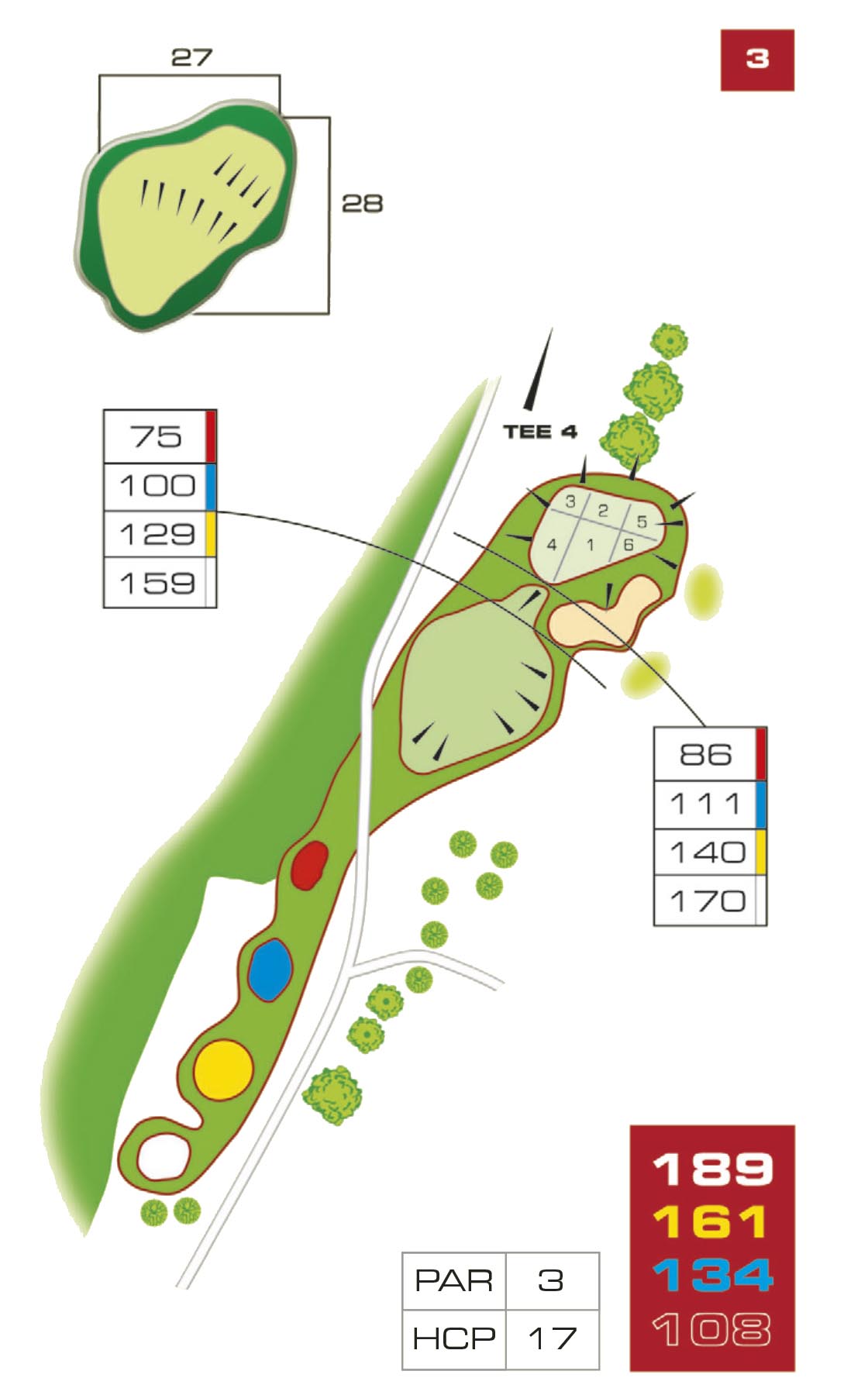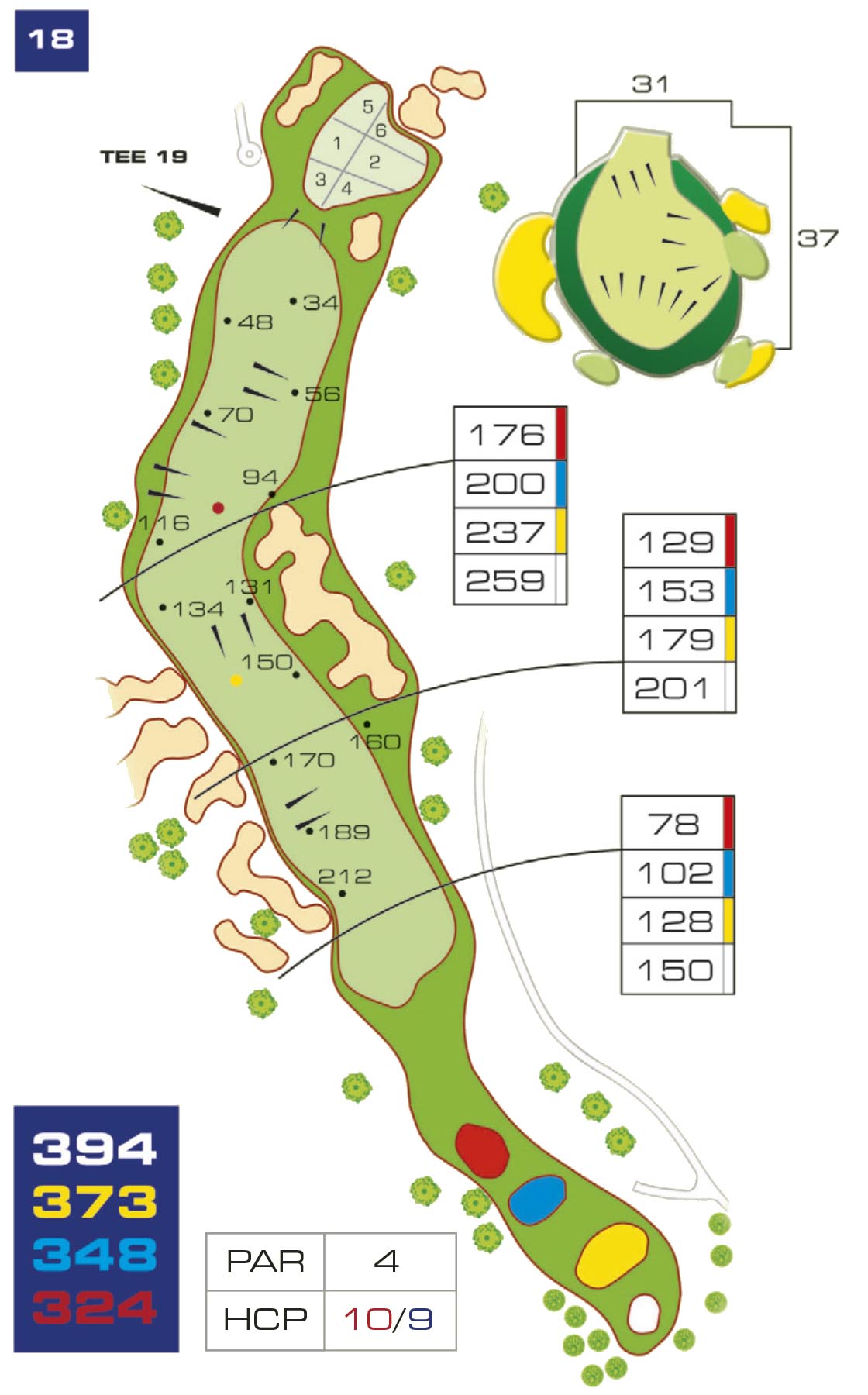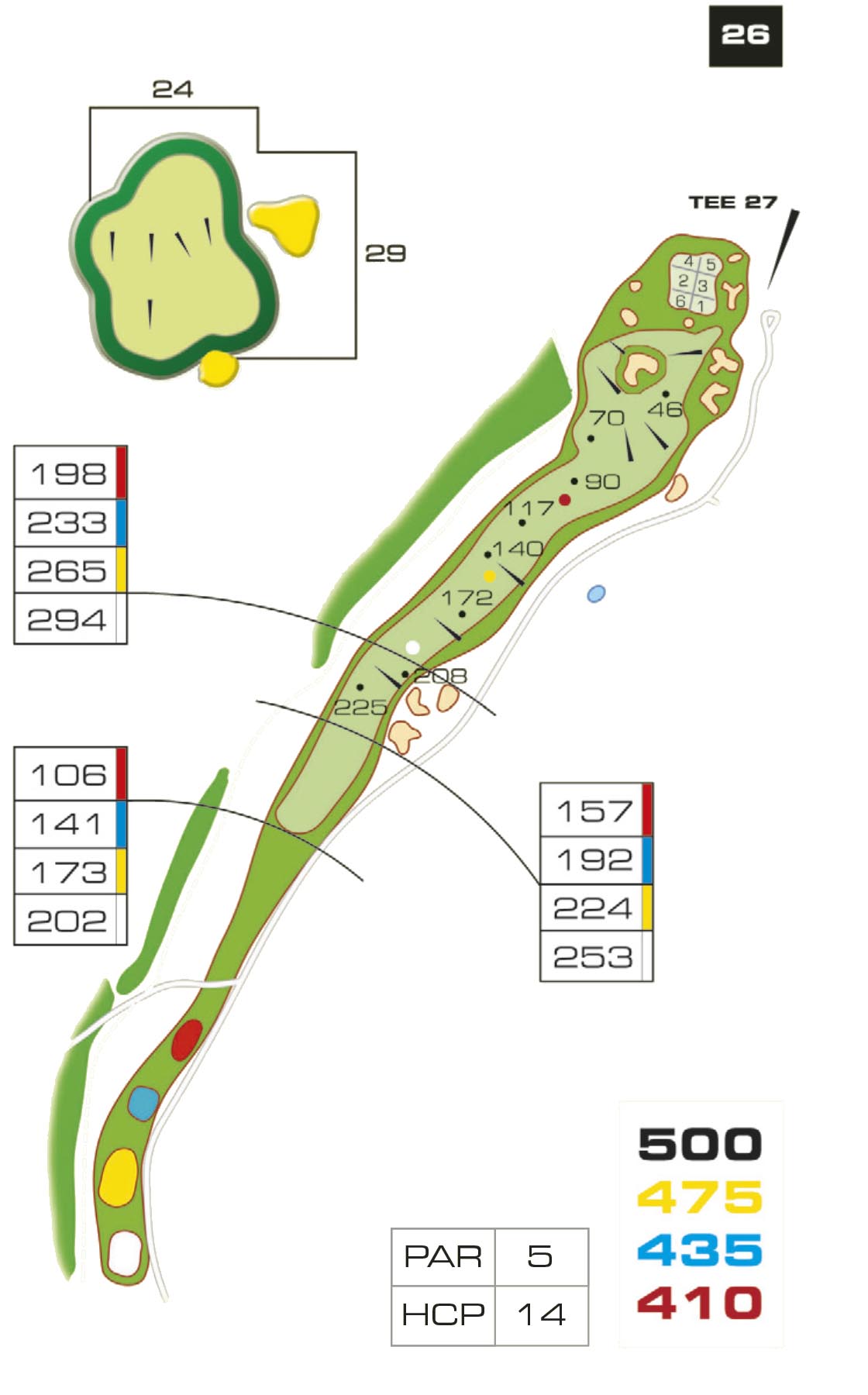About course
Golf Resort Karlštejn is one of the most beautiful golf courses in Europe and belongs to the most visited resorts in the Czech Republic. In 2019, more than 20,000 players played on the 27-hole course. The first 18 holes, opened in 1993, were designed by well-known Canadian architects Les Furber and Jim Eremke. After three years of construction, the first golfers could enter the new 18-hole course with a unique view of the medieval Karlštejn Castle.
The wooded hilly landscape with limestone rocks, rich fauna and flora is an oasis of peace and quiet, yet only a 40-minute drive from the center of the Czech capital.
Sensitive integration into the original terrain in close proximity to the nature reserve gave rise to a unique golf course with full-grown trees, deep ravine, water reservoirs and a number of sand barriers that liven up the game and create a very attractive environment for even the most demanding players. “Easy bogey but difficult birdies” was the main motto of the architects of the course and thanks to that even players with very different handicaps can play together.
In 1997, the Golf Resort Karlštejn hosted a four-day PGA tournament. In the competition of many excellent golfers from around the world, the German pro Bernhard Langer won with a total score of 240 (-20). However, Patrik Sjöland, the Swede, holds the record for the course, with only 61 shots in the second round of the Chemapol Trophy that year.
In 2008, the third nine-hole course was added to the original 18-hole course. Its construction on the southern side of the hill Voškov was again entrusted to the architects Furber and Eremenko. The third nine makes maximum use of the original stripes of mature trees and shrub floors and, unlike the first two ones, it is technically more demanding, but its distinctive charm can enchant everyone.
Hole n. 1 PAR 5
The first hole is a pleasant start. You have be careful only about the outs on both sides and hit between the laid large but shallow bunkers. If you succeed in the first shot, the road to green is open. Green is large, not too wavy, but is closed again between bunkers from all sides. It is a duty to play here in your par.
Hole n. 3 PAR 3
From a gentle hill to the green, which is placed on a small clearing and protected by a large bunker. Rather play for the centre and avoid the escarpment which is to the left under the green. On the right there is out, but its boundary is really far from the green. The green is large and slightly wavy.
Hole n. 4 PAR 4
A difficult hole. From a slightly raised tee you play on a fairway, with rough or out on the right in front of you. Here it pays to hold left and let the ball reach the centre of the fairway. The second shot is very long. Beware of the bunker that protects the green from the left. The green is a challenge. As you putt downhill, the balls run and end to the right off the green.
Hole n. 5 PAR 4
Another challenge. Very narrow hole lined on the right side by the out. Rather keep to the left, farther from the bunker halfway to the flag. The path to the green rises slightly and the putting green is protected by two other bunkers. Green is long, narrow and putting is a big problem for most players. Try to place the pass as close as possible to the flag.
Hole n. 6 PAR 3
A long 3 PAR played downhill on a large green, but surrounded by bunkers from both sides. Along the right side there is the forest border marked as red water. Stay more to the left than right. It’s good to watch the wind. There is a wave on the green roughly in the middle and it is good to put the ball on the right side to avoid a difficult putt.
Hole n. 7 PAR 5
Dogleg to the right. Drive is uphill and along the road that literally attracts the balls. You play the first shot short of a big bunker. Then the fairway breaks to the right and continues slightly uphill to the green. Try to play fairly on the fairway. The green is protected by three bunkers on the right, by one on the left. There is a terrain wave on the green.
Hole n. 8 PAR 4
Next dogleg uphill to the right. You play the first shot between the big bunkers that are in the landing zone on both sides. You will find four on the right and two on the left. Then you will continue to climb the raised green. It’s large but straight. However, it is recommended to play as close as possible to the flag so that your putt does not mean tens of meters to the hole. For the second shot take rather one number longer club.
Hole n. 10 PAR 4
A pleasant start to the second nine. Downhill from the clubhouse to the open fairway, where you have to watch out for a well placed bunker on your right. Avoid two bunkers on either side of the green when hitting the green. The green is not the easiest one for putting when the hole is in the back, so be careful where you place the ball on the green.
Hole n. 11 PAR 4
Similar to the ten downhill on green. In the landing zone of the first stroke there lies a large and shallow bunker. Moreover, there also runs an out on both sides of the fairway. On the left side there is a mature tree. The green is large and very rugged, protected by three bunkers. Behind the green there is another out. Again, try to pass as close to the hole as possible. If the hole is on the opposite side of the green, you can putt really far.
Hole n. 12 PAR 3
The first 3 PAR of the second nine is pleasant if there is no strong wind. The green is protected by a large bunker on the left and a smaller one to the right at the back. The green is quite large and straight. If you hit it with the first shot, puttting should not make you bigger problems. There is enough space around the green on the right side.
Hole n. 13 PAR 5
Play the first stroke lightly downhill and you have to watch out for the big, shallow bunkers to the right. Then there awaits you a stroke before the gorge, where the fairway is clamped on both sides by the forest and passes through a small valley. There is red water on both sides. By the third stroke you should attack the green that is on a little elevated platform and clamped between sands from almost all sides. The green is sloping from right to left, therefore play to the right side.
Hole n. 14 PAR 3
The last 3 PAR on the course is a real challenge. It is played over a pond and it is about length and accuracy. If you want to get the ball on the green with the first stroke, you really have to know how. Otherwise, it is recommended to play left before the bunker and only with the second stroke try to place the ball as close to the flag as possible. The green is again surrounded by bunkers. It is uphill and if you overplay the hole a lot, you will have a difficult putt.
Hole n. 15 PAR 4
Beautiful dogleg to the left. It is not far across the water and once you get through it, you can attack the green. The road leads up a steep hill between bunkers that are on both sides of the green. If you are a long player, you will try the first stroke right on the green. If the wind is against, play conservatively and go for your par.
Hole n. 16 PAR 4
The stroke may seem very difficult from the tee, but if you play a calm straight stroke across the valley, you will get to the fairway on the other side, from where there leads a straight path to the green. The second stroke you will play down the hill on the green, which is straight and protected from both sides by shallow bunkers. Beware of the forest on your right. The green is straight and there is no need to overplay the putts too much.
Hole n. 17 PAR 5
The last par 5 on the course is dogleg to the left, which ends up a steep hill. The first stroke should be placed well on the fairway. Watch out for two longitudinal bunkers to the right. The second stroke leads to a curve where there are the impermeable bushes on the left and then up the hill. The green is protected from both sides by bunkers and divided in the middle by a wave. It is necessary to hit the right part where the hole is drilled.
Hole n. 18 PAR 4
The last hole is a long way to the clubhouse. The first stroke you play against the hill and the ball stays at the place of landing. The second stroke on the green then will usually be very long. You will have to overcome the big bunker on the right and other bunkers that protect the green on both sides. Moreover, the green is very difficult. Putts need to be overplayed a lot.
Hole n. 20 PAR 4
Beautiful but tricky hole. No driver is needed on the first stroke. Just a blow of about 180m and the ball will be in an ideal position. The second shot is played over the pond and there is basically no other option. The green is not complicated, but if you overplay it, you will have a difficult chip back to green.
Hole n. 22 PAR 5
The longest par 5 at Karlštejn. Driver is played short of bunkers. The second stroke should be accurate. You have to play between the tree and the bunkers on the left, ideally one hundred meters from the green. This hole is unreachable for an ordinary player by the second stroke on the green. The green with the wave in the middle is difficult for longer putts.
Hole n. 26 PAR 5
Nice par 5 slightly downhill. At the drive it is necessary to keep an eye on the left side, where there stretches impermeable bushes. At the second shot it is good to head right from the green and avoid the difficult deep bunkers. For the third stroke, the distance is a little harder to estimate because there is free space behind the green. The green is easily predictable for putting.
Hole n. 27 PAR 4
The last hole, but no rest awaits you. Requires a long and accurate drive to the left of the fairway. Watch the right side where there is a precipice to the previous hole of par five. The second stroke and it is far to the green. Perhaps only a frequent wind in the back helps. There is a deep bunker on the right side of the green. The green is big and not tricky at all.





























